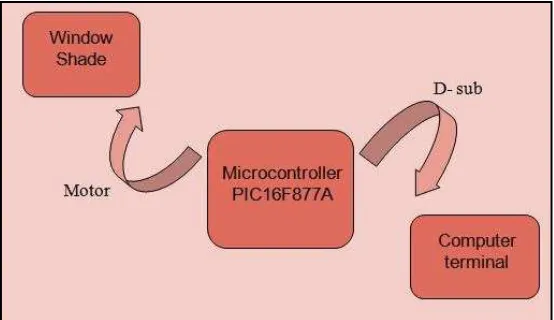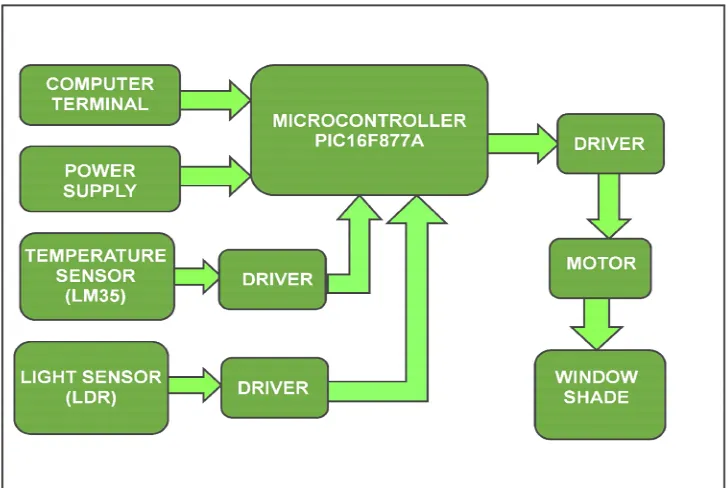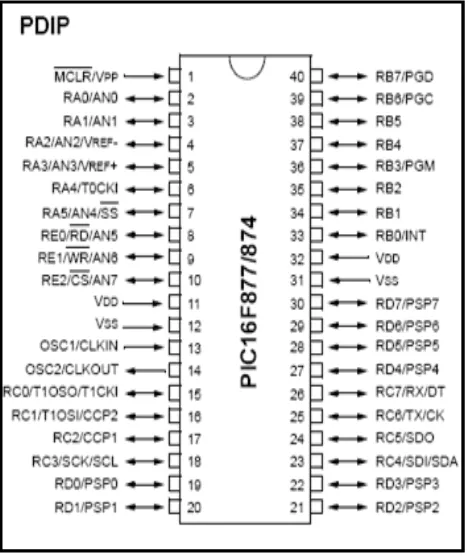SMART WINDOW SHADE
AIDA BINTI JOHARI
This report is submitted in partial fulfilment of the requirements for the award of Bachelor of Electronic Engineering (Telecommunication Electronics) With Honours
Faculty of Electronic and Computer Engineering Universiti Teknikal Malaysia Melaka
UNIVERSTI TEKNIKAL MALAYSIA MELAKA
FAKULTI KEJURUTERAAN ELEKTRONIK DAN KEJURUTERAAN KOMPUTER
BORANG PENGESAHAN STATUS LAPORAN
PROJEK SARJANA MUDA II
Tajuk Projek : AIDA BINTI JOHARI
Sesi
Pengajian : 0 9 / 1 0
Saya AIDA BINTI JOHARI
mengaku membenarkan Laporan Projek Sarjana Muda ini disimpan di Perpustakaan dengan
syarat-syarat kegunaan seperti berikut:
1. Laporan adalah hakmilik Universiti Teknikal Malaysia Melaka.
2. Perpustakaan dibenarkan membuat salinan untuk tujuan pengajian sahaja.
3. Perpustakaan dibenarkan membuat salinan laporan ini sebagai bahan pertukaran antara institusi
pengajian tinggi.
4. Sila tandakan ( √ ) :
SULIT*
*(Mengandungi maklumat yang berdarjah keselamatan atau kepentingan Malaysia seperti yang termaktub di dalam AKTA RAHSIA RASMI 1972)
TERHAD** **(Mengandungi maklumat terhad yang telah ditentukan oleh organisasi/badan di mana penyelidikan dijalankan)
TIDAK TERHAD
Disahkan oleh:
__________________________ ___________________________________
(TANDATANGAN PENULIS) (COP DAN TANDATANGAN PENYELIA)
Alamat Tetap:
NO 13, RANCANGAN RUMAH MURAH,
JALAN GENTING, 11000 BALIK PULAU,
PULAU PINANG
“I hereby declare that this report is result of my own effort except for works that have been cited clearly in the references.”
Signature :
“I hereby declare that I have read this report and in my opinion this report is sufficient in terms of scope and quality for the award of Bachelor of Electronic
Engineering (Electronic Telecommunication) with Honours”
Signature :
Supervisor’s Name : MISS SITI AISAH BINTI MAT JUNOS @ YUNUS
ACKNOWLEDGEMENT
ABSTRACT
ABSTRAK
CONTENT
CHAPTER CONTENT PAGE
TITLE
CONFESSION iii
ACKNOWDGEMENT vi
ABSTRACT vii
ABSTRAK viii
CONTENTS ix
LIST OF FIGURE xii
LIST OF ABBREVIATION xiv
LIST OF APPENDIX xv
I INTRODUCTION 1.1 Motivation Of Project 1
1.2 Problem Statement 2
1.3 Objectives 2
1.4 Scope 3
1.5 Thesis Outline 3
II LITERATURE RIVIEW 2.1 Smart Window Shade Literature Review 5
2.2 Project Ideas 6
2.3 Block Diagram 7
2.4 Microcontroller (PIC) 8
2.4.2 Memory 9 2.4.3 Flash Program Memory 10
2.4.4 EEPROM Data Memory 10
2.4.5 Data Ram (SRAM) 11
2.5 Sensor 11
2.6 Relay 14
2.6.1 Relay Application 15
2.7 Transistor 16
2.8 Crystal Oscillator 18
2.9 Light Sensor 20
2.10 Voltage Regulator 21
2.11 Limit Switches 22
2.12 Servo Motor 23
III METHODOLOGY
3.1 Project Methoology 25
3.2 Explanation of Project Planning 26 3.2.1 Searching for Project Title 26 3.2.2 Understanding the Circuit Operation and 27 Circuit Analysis
3.2.3 Preparing for Proposal 27 3.2.4 Searching for Component 27 3.2.5 Testing the Circuit Function 28
3.3 Flow Process of the Project 29
3.3.1 Main Flowchart 29
3.3.2 Hardware Flowchart 30
3.3.3 Software Flowchart 31
3.4 Printed Circuit Board (PCB) Manufacturing 32 3.4.1 PCB (Printed Circuit Board) 32 3.4.2 Classification PCB’s 32
3.4.3 Types of PCBs 33
3.4.4.1 Schematic Design 34
3.4.4.2 Schematic 34
3.4.4.3Layout Design 34
3.4.5 The Printed Circuit Board Layout(PCB) 35
3.4.6 PCB Fabrication 36
3.5 Etching Process 37
3.6 Prepare the PCB for Use and Drill the PCB 40
3.7 Drilling 41
3.7.1 Drilling Process 41
3.8 Soldering Process 42
3.8.1 Solder onto a PCB 43
3.9 Testing and Troubleshooting the Circuit Function 44
3.10 Designing a Suitable Case 44
3.11 Software Development 45
IV RESULT & DISCUSSION
4.1 PCB Layout 46
4.2 Temperature Sensor Input Result 47
4.3 Light Sensor Input Result 49
4.4 Computer Terminal Interface Result 51
V CONCLUSION AND FUTURE RECOMMENDATION
5.1 Conclusion 53
5.2 Future Recommendation 54
LIST OF FIGURES
FIGURE TITLE PAGE
2.1 General system block diagram of Smart Window Shade 7 2.2 Smart Window Shade MCU setup 8
2.3 PIC 16 F 877 9
2.4 PIC 16F877 Program Memory Map and Stack 10
2.5 Types of Sensors 12
2.6 LM35 Temperature Sensor 12
2.7 Electrical connection of LM35 temperature sensor 14
2.8 Relay 15
2.9 Many type of transistor 17
2.10 Layers of a Transistor 17
2.11 Typical transistor packages 18
2.12 Crystal Oscillator 18
2.13 Light Dependent Resistor 20
2.14 Voltage Regulator 7806 & 7812 22
2.15 Limit Switches/Micro Switches 23
2.16 Servo Motor 24
3.1 Main Flowchart 29
3.2 Hardware Flowchart 30
3.3 Software Flowchart 31
3.4 Circuit on plastic transparent 38
3.5 Circuit printed put onto PCB board 38
3.6 Exposure units 39
3.7 PCB after developing 39
3.9 Drilled PCB 41
3.10 Drilling process 42
3.11 Soldered PCB 44
3.12 Testing the connection of the track circuit by using multimeter 44
3.13 Design Prototype PCB Board 45
4.1 PCB Layout 46
4.2 Basic circuit of temperature sensor LM35 47
4.3 When click the open button at computer setting manually 48 4.4 When click the close button at computer setting manually 48 4.5 When the temperature sensor LM35 sense heat 48
4.6 Basic circuit of light sensor LDR 49
4.7 When the LDR in darkness 50
4.8 When the LDR is bright 50
4.9 Computer terminal setting interface 51
LIST OF ABBREVIATION
PIC – Programmable Integrated Circuit
LIST OF APPENDIX
APPENDIX TITLE PAGE
A Journal of a Comprehensive Stochastic Model of Blind 56 Usage
B Journal of Integrating Automated Shading and Smart Glazings 64
with Daylight
C Visual Basic Interface Source Code 73
CHAPTER I
INTRODUCTION
Chapter 1 presents the background of the project that it consist objectives, problem statements, scope, methodology, and report structure.
1.1 Motivation of Project
This project is about a self-adjusting window shade that will automatically opened, and closed by itself. A computer terminal acts as a remote to broadcast instructions to the window shade.
Nowadays many houses have ceiling windows and that are in hard to reach places. These windows need to be covered at different times and for that there are no the automatic window blinds that can be remote controlled to close or open when people need, or even in the most advanced cases that when people need to close and open at specific times of the day.
without needing for them to be open. If you want to override this setup then it should not be too difficult to do.
These manual adjustments are stored into microcontroller’s system along with the room’s current ambient light and temperature settings. When both the conditions of lighting and temperature are found in the room, the window shade will automatically re-adjusted itself to that previous level. It might also be favorable to create a memory system within the window shade that would allow it to recall the user’s previous settings and automatically adjust based on the current conditions in the environment.
1.2 Problem Statement
Nowadays a lot of people are busy with their daily chores and sometimes not even have time to complete simple task like opening and closing up the windows. In addition to those who live in double staying or big houses, it may take quite some time to open and closed the windows in each room. Hence, they tempted to waste lots of time every single day just to complete the task and some might even forget the crucial action taken on the windows. Recent technologies make it possible to solve this problem.
1.3 Objectives
The main objective for this project is to design and construct the smart window shade.
The second objective is to create a system that used a computer terminal act as a remote to broadcast instructions to the window shade.
The third objective is to create a memory system within the window shade that would allow it to remember the user’s previous settings and automatically adjust based off the current conditions in the environment.
1.4 Scope
The scopes of this project are to program for Programmable Integrated Circuit (PIC) for the smart window shade system which will automatically open and closed by itself. One of the biggest issues is that had to consider is the program for PIC that may connected to the computer terminal which acts as a remote to broadcast instructions to the window shade. Therefore, research on selecting the most cost efficiency microcontroller and sensor must be done.
Besides that, a research must be done to know which software is suitable to program the data of this smart window shade system. This project also used both hardware and software that have to consider about. To build the hardware of this project, a research must be done to select or find the best components. Then, model is needed to be constructed and tested in order to determine the availability of the functioning.
1.5 Report Outlines
This report consists of six chapters that have been outlined in the table of content. The brief summation of each chapter is stated below.
Chapter 1 will cover on introduction of the project. A bit of explanation will be done in order to complete this project. It also presents the readers with objectives, problem statements, scope of works, and the report outlines of the project.
Chapter 2 is the literature review about project theory and the logical structure. This chapter explains the sources or articles that are related to the project. It is consisting of the product that has been appearing in the market nowadays.
Chapter 3 is about the methodology of the project which is hardware part and software part. This chapter also emphasized on the circuit design that contains the process involved during designing the project.
Chapter 4 is the discussion on the explanation about results obtained from this project as well as designing process taking place, problem statement and some new idea.
Chapter 5 is about the conclusion of the project which is a summary of the entire objective, the program achievement and the future suggestion on how to upgrade the system.
CHAPTER II
LITERATURE REVIEW
This chapter is to discuss some fundamental ideas of smart window shade. The features of this project are also including. All components that be used in this project will be explained as well.
2.1 Smart Window Shade
Window shades give a very unique and distinctive design to the home. They also help the homeowners to lessen their energy cost by keeping and allowing the use of natural sunlight. Window shades provide warm and comfortable ambiance to keep people relaxed as they stay in a room. Window shades are available in an extensive collection of styles, colours, and designs. They are created from a plethora of textures, materials, and sizes, too. So whether people want to control the sunrays or utterly thwart it out, window shades can grant them with generous options. [1]
The window shade giving people much needed privacy, which is can aid lessen the electric costs by allowing the use of natural sunlight. The solar window shade permits sunlight to enter the room and if desired to have less light, people can easily pull down the chain cord. Those made of bamboo, even entirely closed, let small amounts of sunlight to touch portions of the room. Cloth woven or sheltered window shades that slightly drag up allow ample light to flow through at the
underside. Regulating the amount of sunlight escaping into the room all through daytime hours, aids in causing the preferred aura. [1]
Likewise, window shades are wonderful, versatile ornaments of a home. They can go well together with practically all styles of decorations and architecture. They can be solid or patterned, curved or leveled, and opaque or clear. Shades can also be plain and clean lined or can be greatly enhanced and elaborately shaped. There are special types of window shades for different kinds of settings. Shades of assorted types normally express diverse meanings. It may be comfortable and relaxed, sleek and modern, warm and homey, and the like. [1]
2.2 Project Ideas
Smart Window Shade is the self adjusting window that will automatically open and close the blinds by itself. A computer terminal acts as a remote to broadcast instructions to the window shade. These manual adjustments are stored into the microcontroller’s system along with the room’s current ambient light and temperature settings. When these lighting and temperature conditions are found in the room, the window shade will automatically readjust itself to that previous level.
The ideas of designing the Smart Window Shade are based on Lutron’s Sivoia shading solutions. Lutron Shading Solutions have created a system of electronic roller shades that let user blend natural and artificial light into the perfect ambiance. [2] Homes and workspaces are designed with windows because we intuitively understand that sunlight adds a comforting, refreshing quality to any room. However, achieving the greatest beauty and efficiency in each room means being able to control the light that surrounds us.
With Smart Window Shade, people can quickly and easily control sunlight to prevent harsh U/V rays from damaging expensive furnishings or reduce glare that reflects off of a television or computer screen. At the simple touch of the buttons at Smart Window Shade setting through computer, people can automatically open and
close shades to reduce heat gain in a space, thereby lowering cooling costs, or achieve instant privacy from the outside.
The Lutron system features that was especially interested for this Smart Window Shade project is the remote functionality, and the automatic capabilities of the shade. It might also be favourable to create a memory system within the window shade that would allow it to remember the user’s previous settings and automatically adjust based off the current conditions in the environment.
2.3 Block Diagram
[image:22.595.180.457.445.605.2]The Smart Window Shade contains PIC16F877 Microcontroller which is one to control the computer interface and to operate the window shade. The PIC 16F877 is a microcontroller that has many features in a 40-pin DIP package. The microcontroller connects to the computer terminal. Hyperterm allows the user to enter the input commands to the MCU to send and/or receive data.
Figure 2.1: General system block diagram of Smart Window Shade
The microcontroller contains two modes of operation which are automatic and manual. During manual mode, the microcontroller receives the instruction set by user through computer terminal and processes instructions, moving the shade to the desired position. When it is not receiving instructions, the microcontroller switches to automatic mode, where it adjusts the blinds to the user’s previous settings depending on the lighting and temperature conditions in the room. The
microcontroller then sends a signal out to the motors to rotate them the correct amount to adjust the shade.
Figure 2.2: Smart Window Shade MCU setup
2.4 Microcontroller (PIC)
2.4.1 PIC 16F877
The PIC 16F877 is a microcontroller that has many features in a 40-pin DIP package. Currently known PIC will be PIC 16 F 877 manufactured by MICROCHIP. Aside from programming, other characteristic of the PIC MCU has to be known in order to enable the MCU for function. The PIC 16F877A is the most popular microcontrollers and it is easy to see and comes in a 40 pin DIP pin out and it has many internal peripheral.
The 40 pins make it easier to use the peripherals as the function spread out over the pins. This makes it easier to decide what external devices to attach without worrying too much if there enough pins to do the job. One of the main advantages is that each pin is only shared between two or three functions so its easier to decide
what the pin function (other devices have up to 5 functions for a pin. The figure below show the condition of a PIC 16 F 877 shielded with a shielding tape.
Figure 2.3: PIC 16 F 877
2.4.2 Memory
The PIC 16F877 microcontrollers carry a large memory array, which can be divided into three types:
i. Flash Program Memory ii. EEPROM Data Memory iii. Data RAM


